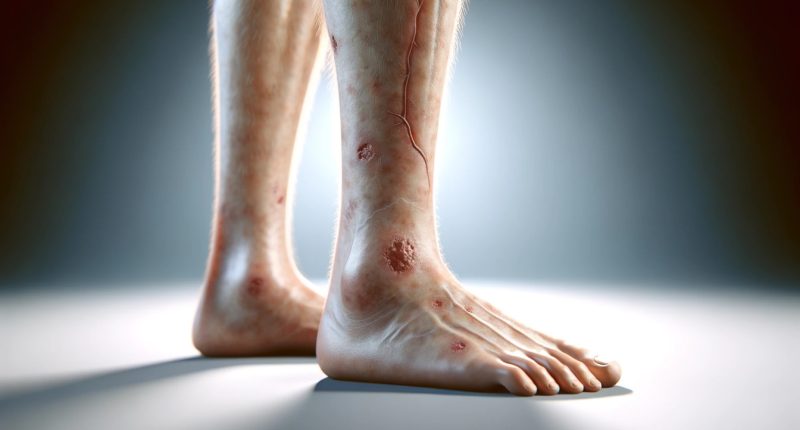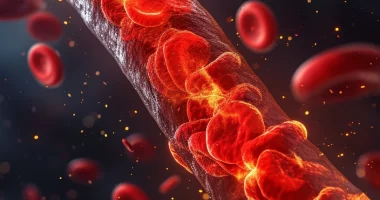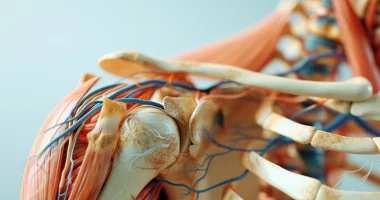Chronic limbischemia
What’s that?
Chronic limb Ischemia is a pathological condition of a chronic nature in which blood flow in the vessels is impaired. Insufficient blood supply to the tissues causes oxygen starvation in the muscles. The disease is accompanied by increased fatigue and leg pain, which forces a person to take long breaks while walking. In most cases, the shins and feet are affected. The patient may also feel numbness and decreased sensitivity in the lower part of the legs. The disease is diagnosed and treated by an angiologist or avascular surgeon) with the participation of other specialists when needed.
General information
Chronic limb Ischemia is one of the most common cardiovascular diseases. Most of the pathology is detected in people after 50-55 years. Smoking, arterial hypertension, diabetes mellitus, and high cholesterol increase the risks of the disease.
The main threat of ischemia is a high risk of limb amputation due to necrotic processes. Up to 20% of disease cases require surgical intervention, with a favorable prognosis awaiting no more than 30% of patients.
Classification
Specialists, taking into account the duration of the course and the clinical picture of the disease, distinguish three stages of lower limb ischemia in the classification.
- At the first stage, the patient has no changes in motor skills, but there are sensations of numbness and coldness of the extremities; there may be pain after a long walk or intense exercise.
- The second stage is accompanied by decreased sensation and pain after walking and other physical activities. The patient develops intermittent claudication.
- Pronounced changes and the formation of trophic ulcers characterize the third stage. Pain persists at rest; the patient loses the ability to move.
Some variants of classifications also imply the allocation of the zero degree when pathological processes have already been launched, but there are no symptoms yet.
Another type is exertion ischemia, when pain, discomfort, and other signs appear only after prolonged load on the limbs, while during sleep or at rest the patient has no complaints.
Symptoms
A key sign of chronic limb ischemia is intermittent claudication. It manifests itself when the load on the legs is significantly increased during prolonged walking, running, squatting, and other exercises. When walking, a person often stops and rests to relieve unpleasant, painful sensations.
The second obvious signal is swelling of the legs and feet. With the development of deeper ischemia of the lower extremities, the following symptoms are added:
- decreased sensation in the legs;
- a tingling sensation, goosebumps on the skin;
- cold skin on the feet and ankles;
- leg hair loss;
- brittleness, and slow growth of toenail plates.
In the future, trophic ulcers will form on the skin, and abrasions and scratches will take a long time to heal, sometimes inflamed, which can eventually lead to gangrene. The acute stage of ischemia transforms into a chronic form.
In advanced cases, the pain syndrome persists even at rest or during sleep, causing the patient constant discomfort. Walking becomes increasingly more challenging; each step is given with great difficulty. Some people use auxiliary support points to move: they hold on to the wall or furniture and use a cane.
Reasons
Arteries carrying oxygen-rich blood to the tissues are lined with endothelium. It is responsible for vascular tone, regulation of hemostasis, and other important functions. Due to various disorders, endothelial dysfunction (the inner lining of blood vessels) develops, which damages the arteries and eventually leads to ischemia of the lower extremities. These disorders include:
- atherosclerosis of the leg vessels;
- long-lasting endarteritis;
- thrombosis;
- endocrine disorders;
- injuries (contusions, penetrating wounds, etc.).
The risk factors are:
- smoking;
- arterial hypertension;
- elevated levels of “bad” cholesterol;
- age (older than 55-60 years);
- obesity;
- sedentary lifestyle;
- irrational diet;
- menopause.
Men are more susceptible to the disease. In women, blood flow disorders in the legs are less common.
Indirect causes of ischemia of the lower extremities can be severe psycho-emotional experiences, frequent stress, and incorrect or too long intake of some medications.
Diagnosis
A physical examination is performed to assess the sensitivity of the lower extremities. The angiologist examines the skin, performs thermometry of the skin on the legs, collects anamnesis, and checks the quality of motor activity of the legs.
The main examination method is ultrasound dopplerography, which allows real-time assessment of the condition of the blood vessel to detect blockage, stenosis, and other pathological changes.
Additional methods are:
- CT or MRI, depending on the indication;
- electroneuromyography;
- arterial oscillography;
In some cases, invasive angiography is performed if other diagnostic methods are not possible or provide incomplete information about the current state of the blood vessels.
Treatment of chronic limb ischemia
The first step of therapy is the correction of the patient’s lifestyle. He must completely abandon bad habits, normalize nutrition, and do special exercises daily.
Conservative treatment involves taking medications that help improve blood flow, normalize vascular tone, and accelerate endothelium formation.
If the patient has chronic diseases that affect the parameters of the course of ischemia, appropriate treatment is carried out with specialized specialists: endocrinologists, nephrologists, etc. A course of physiotherapy is also prescribed, which is necessary for the general recovery of the organism and restoration of full motor activity.
An obligatory stage of therapy is gymnastic exercises and physical therapy. They help improve blood flow, preventstagnation, and help the patient return to an active lifestyle faster. All exercises should be carried out under the supervision of a specialist.
In advanced cases of lower limb ischemia and at high risk of complications, surgical treatment is indicated, which consists of restoring normal blood flow in the affected vessels.
There are several surgical options. The specific variant of the procedure is selected based on the examination results, the patient’s current condition, and the patient’s health characteristics.
May be used:
- Endarterectomy – a technique in which special tools are used to remove atherosclerotic plaques from the vessel lumen;
- Stenting – allows you to use a balloon to increase the lumen of the vessel;
- Femoral-popliteal bypass surgery – used to restore blood flow below a blocked artery;
- Femoral-tibial bypass surgery – used in simultaneous occlusion of the popliteal and femoral arteries.
All these surgical interventions are performed in more than 860 hospitals worldwide (https://doctor.global/results/diseases/chronic-limb-ischemia). For example, Femoral-popliteal bypass graft surgery is done in 28 clinics across Turkey for an approximate price of $10.0 K (https://doctor.global/results/asia/turkey/all-cities/all-specializations/procedures/femoral-popliteal-bypass-graft-surgery).
Prevention
In order to reduce the risks of lower limb ischemia, experts recommend:
- Stop smoking, including electronic devices;
- Adhere to the principles of healthy eating, limiting fast food, sweets, alcohol, and fatty foods;
- Include more fruits and vegetables, greens, and dairy products in your diet;
- Take time to walk in the fresh air;
- Give your body adequate physical activity daily;
- Control existing chronic diseases;
- Avoid injuries and bruises to the legs;
- Normalize the psycho-emotional background.
People over the age of 50, especially those with diabetes or blood pressure problems, should have annual preventive checkups with a vascular surgeon.
Rehabilitation
Recovery time and prognosis depend on the patient’s initial condition at the time of seeking medical help and the treatment tactics performed.
During the rehabilitation period, it is essential to:
- completely stop smoking because the products of tobacco smoke constrict blood vessels and have a damaging effect on tissues;
- avoid alcoholic beverages, limit caffeine;
- adhere to the prescribed diet;
- take medications in exact accordance with the regimen and dosage specified by the attending physician;
- not to visit saunas;
- reduce contact with people who are sick or have recently had an infectious disease.
Patients receive more precise recommendations from their attending physician. They also set dates for follow-up visits and preventive examinations in the future.




